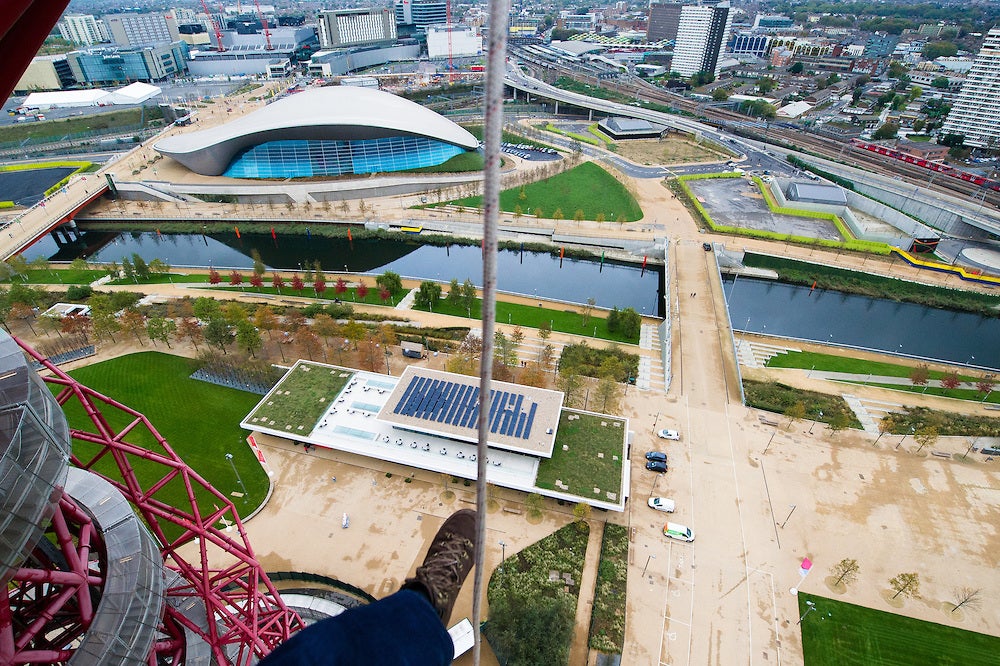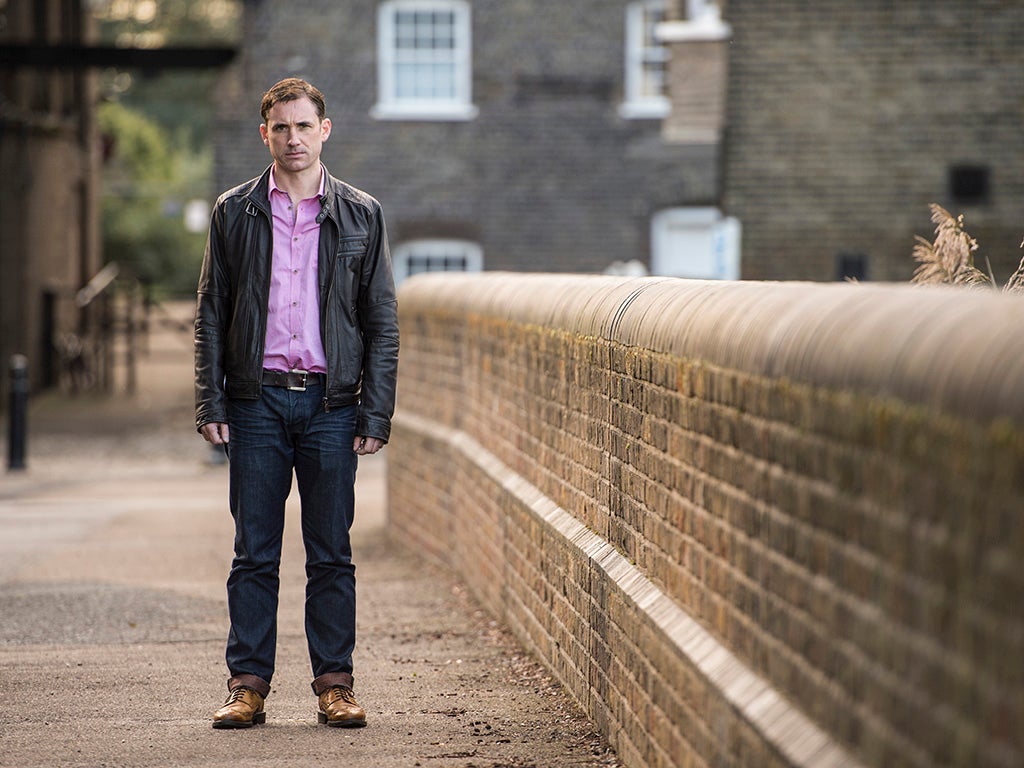Fright Club: How to overcome phobias by tackling fears head-on
By learning to manage discomfort in a series of increasingly challenging but manageable tasks, phobics can re-wire the primitive, reptilian brain and extend their window of tolerance

Peter Naylor was eight years old when his fear of heights began controlling his life. As he, his parents and his brothers reached the top of Blackpool Tower on a family holiday, a paralysing fear gripped his body.
For his brothers, the ascent was just another part of a childhood trip, but for Peter, now 51, the feelings of terror, nausea and discomfort are still all too vivid.
After that moment in 1972, his fear of heights became so debilitating that he was once forced to ask a stranger to hold his hand on a chair lift during a skiing holiday, to avoid enduring a panic attack.
Peter, who works at a financial services company in Brighton and Hove, is one of ten million people in the UK living with a phobia.
But unlike many people whose skin crawls at the thought of tackling their fears, when Peter saw an advert in a newspaper calling for extreme phobics to be cured as part of Sky TV’s Fright Club, he grabbed the chance to take control of his life.

Putting himself at the mercy of psychologists Richard Reid and Becky Spelman, Peter and a group of nine other extreme phobics were given just three days to tackle the fears that had consumed their lives, using a technique called exposure therapy.
The group was thrust into completing a series of unknown tasks with the aim of desensitising their brains to what triggers their fears, and culminated in participants scaling Anish Kapoor’s 114.5m-tall winding red ArcelorMittal Orbit near London’s Olympic Park.
“They were driving us around London in a minibus with cameras on-board and we were all worrying about what was happening next. We'd arrive somewhere and they'd say 'This is what we're going to do guys", and we'd just have to get on with it. So they threw us in at the deep end,” explains Peter.
Across six episodes, groups of people terrified of heights, birds, dogs, spiders, water, and confined spaces were challenged to confront their fears in tasks they could barely visualise comfortably just hours before.
Those frightened of animals finished the weekend handling and interacting with the creatures in shows for their families, while those with claustrophobia and aquaphobia endured being shut away in coffins or working as sea fisherman.
So, how do such crippling fears develop?
“A very simplistic model for the brain is that it operates on three different levels," explains Richard Reid, who owns the Pinnacle Therapy practise in London and helped treat victims of the 7/7 bombings in the capital.
“You’ve got the reptilian brain, the mammalian brain, and the frontal cortex, where you do all your rational thinking. But it’s actually this reptilian brain, which is the most primitive part of the brain, that influences the development of phobias.
"It’s based upon keeping us safe, so the reptilian brain deals in generalisms because it thinks ‘If I'm in danger I need to make snap decisions.’ So people experience social situations in the same way our ancestors would have experienced life or death situations.”
The reptilian part of the brain is to blame for the development of both the arguably more understandable fears, such as heights and potentially dangerous animals, as well as those which have no obvious links to danger, which can include anything from zips to baked beans.
Fears become hardwired into the reptilian brain in one of three ways: by observing and learning the fears of others as a child; from a traumatic experience, like being attacked by a dog; or by a process known as anchoring, where a person has a fright and the brain links a nearby object to the feeling of fear.
Such moments, which people often struggle to remember, plant the seeds of phobias, and cause sufferers to be cast into “fight or flight” mode when they encounter their fear.
The subsequent overwhelming feelings of anxiety are accompanied by physical symptoms from sweating and hot flushes, to choking sensations and chest pains which can ultimately result in full-blown panic attacks.
For extreme phobics like Peter, avoiding these emotions become a debilitating obsession, which often comes hand-in-hand with hyper vigilance - a heightened state of sensitivity to your surroundings, as you scope for potential triggers.
And while exposing extreme phobics to their deepest fears over three days merely sounds like cruel, sweat-inducing torture merely for the enjoyment of viewers, the combination of momentum through speed and a group dynamic acts as a potent cure.
Eight months after Peter first visited the top of the Orbit on the program, he plans to launch himself off the enormous structure in an abseil to raise money for the Stroke Association in memory of his late mother, Elizabeth Naylor.
“It’s the group dynamic that really worked,” Peter recalls.
“You have nine other people with you that you know are genuinely scared and have this phobia of heights too, and we were all there working as a team to help support, guide and encourage each other.”
But the most vital part of over coming a fear is slowly and repeatedly exposing yourself to the anxiety, and allowing the discomfort, however intense, to pass.
“Ultimately, people with phobias have got to put themselves out there,” Richard says, explaining that people can learn to cope with situations by visualising positive outcomes, and by using distraction techniques.
Some 43 years after Peter froze at the top of the Blackpool Tower, Peter was able to climb the staircase of the Orbit as Richard asked him to visualise the stunning view of London he would experience, and to discuss his passion, Liverpool FC.
“It really go my mind focused and I didn't think about going up the Orbit. When I got to the top I thought what the hell have I done? It was very clever” Peter says.
By learning to manage discomfort in a series of increasingly challenging but manageable tasks, phobics can re-wire the primitive, reptilian brain and extend their window of tolerance.
“If you’re scared of spiders you might start off by learning to manage your discomfort around seeing picture of a spider, and then you might go with a friend or a loved one and look at a spider from a distance and get used to managing that. Then you might gradually move closer to the spiders, and this is what we did in the show,” Richard says.
“If you start off in a small way you can start to develop some of these skills around managing your anxiety, and get more confident and move a little bit further on. So it's really teaching patients self empowerment.
“Nothing can replace just putting yourself out there. But generally, people avoid these situations, so they never allow their brain to gather the evidence that says ‘this situation is not unsafe’.”
However, Richard stresses that for people like Peter, seeking professional help, be that from a GP or therapist, is a vital way of receiving the objective support that friends and loved ones - who can act as enablers for sufferers - struggle to give.
“If you are having to go miles out of your way to avoid a situation or your phobia is stopping you moving on with your career, having a relationship or is having an impact on your kids, then the time has come to do something about it.”
Richard, who has tackled his fear of the sea using exposure therapy, hopes the show will normalise phobias, and inspire people to seek help.
“You're not a freak, lots of other people have phobias and actually you're one of the brave ones because you're coming forward and doing something about it,” says Richard.
This feeling of shame is what stopped Peter seeking help for almost five decades. But he says he now realises phobias are nothing to be ashamed of, and can affect anyone.
“I felt embarrassed,” admits Peter, who says his fear of heights jarred with his persona as an avid weight trainer who relishes keeping fit and playing sports.
“After the treatment, I’m not embarrassed and I feel more open to speak about my fear. A couple of these bigs guys down the gym they’ve said ‘Well done made, good luck to you’ and admitted they’ve got a fear of spiders - these 18 stone guys who are big body builders.”
Peter now uses the techniques he’s learned as a source of confidence in day-to-day life.
“It has definitely made me more confident. I just feel like it's given me the tools and techniques to face up to other fears in my life, not just the heights.
"If there's something I want do, like furthering my career, I use the techniques to think and visualise the outcome and think 'Yes i can do this'. It's given me a positive outlook on my life, and I'm optimistic about the future as well.”
Fright Club starts on Weds 3 June at 8pm on Sky1
Join our commenting forum
Join thought-provoking conversations, follow other Independent readers and see their replies
Comments